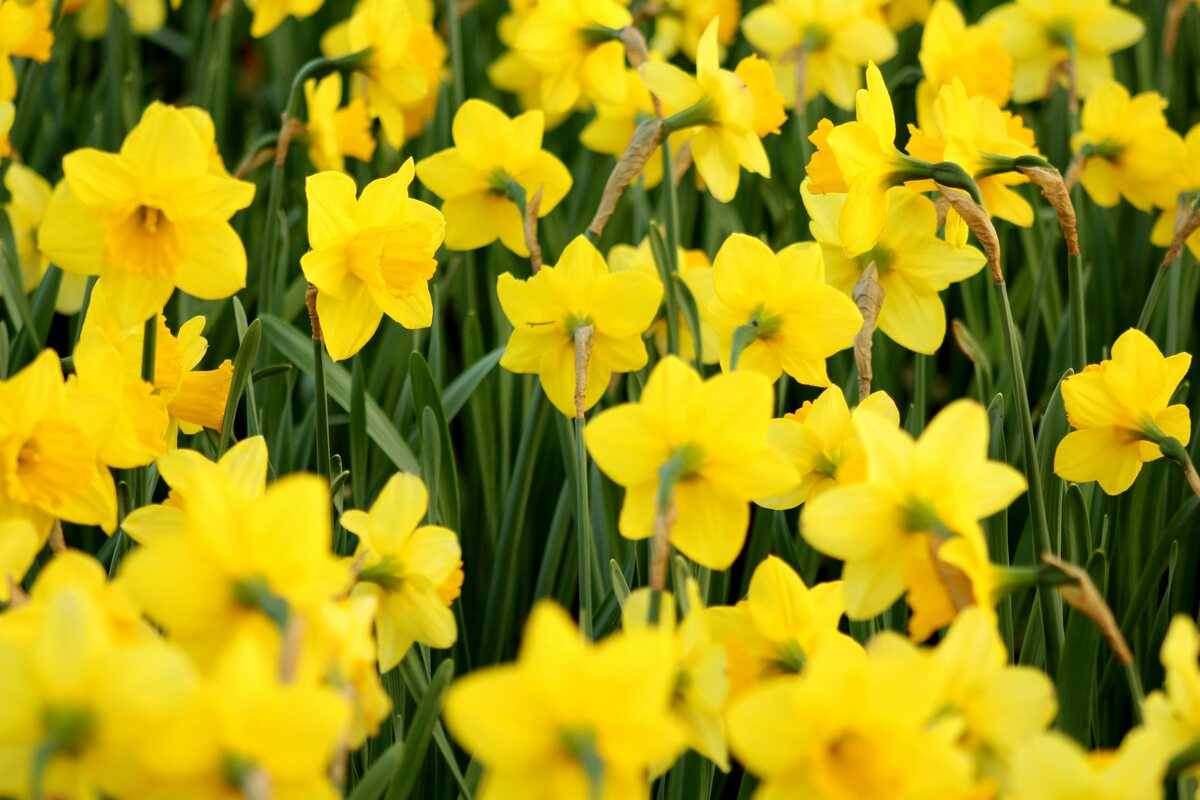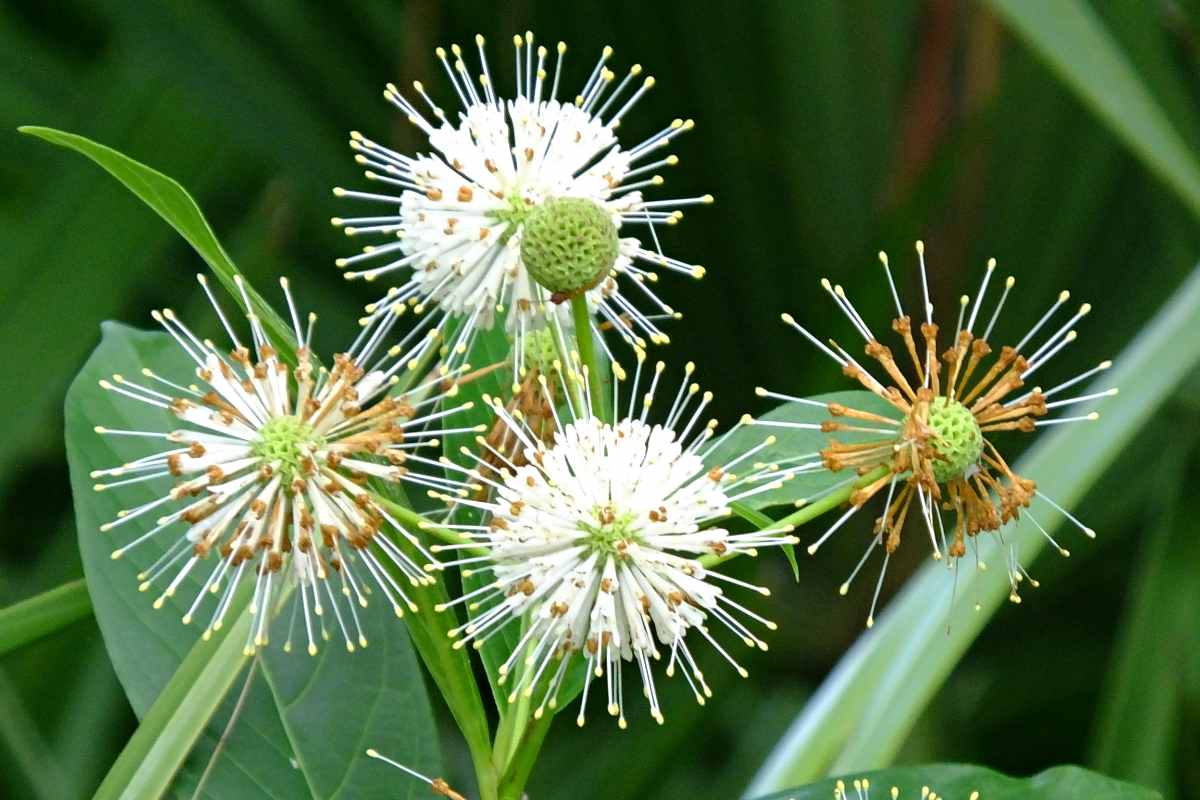
Spring in New Hampshire is a treat. The snow melts, and the flowers start blooming again. But don’t stand around too long admiring the scenery. There are some things you need to do to get your own yard in shape. Follow these spring lawn care tips for New Hampshire to get the most out of your grass all year long.
March Spring Lawn Care Tips for New Hampshire
Whether March comes in like a lion and goes out like a lamb or not, it’s a good month to begin preparing for the warm months ahead. Living in a state so far north, March is a bit early to start in on lawn care, but it is a great time to start prepping your equipment so everything is set for the start of the season.
Tip 1: Spread Snow Evenly
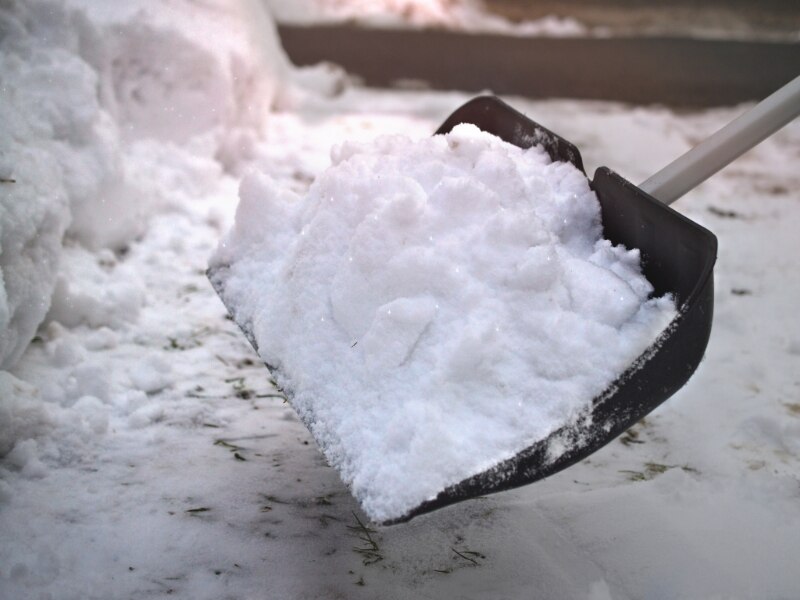
With much of the state continuing to get snowfall throughout the month of March, you’ll want to use a rake or shovel to spread the snow evenly across your lawn.
Uneven snow can become harmful to your lawn and garden as it can lead to parts of your lawn waking up from dormancy sooner than other parts. This could lead to diseases like snow mold which is caused by excess moisture.
Caution: If you find a bare spot, do not step on it, particularly if it’s wet. Grass is very fragile during this time. Walking on the lawn can harm the grass and delay its recovery until later in the season.
Tip 2: Buy Fertilizer and Weed Killer
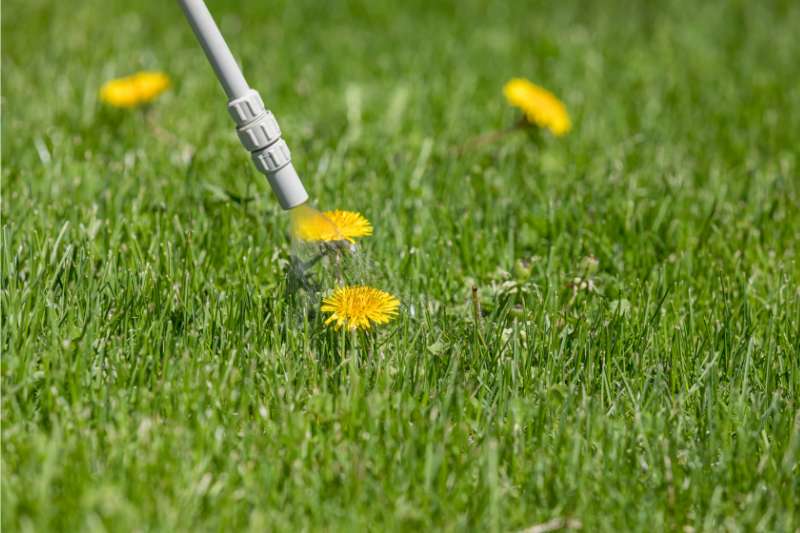
If you know you are going to need to buy fertilizer or any weed-killing products, it can pay to shop early. Not only can you sometimes find good deals, but you also won’t be caught by surprise when it’s warm enough to apply them. It’s especially important to have these supplies on hand since pre-emergent herbicides need to be applied early.
Tip 3: Get Your Lawn Care Tools Ready for Spring

Spring has started, and it’s time to get your lawn equipment duty-ready.
- If you use gas-powered tools, stock up on gas, change the spark plug, and replace the engine oil and oil filter.
- If you use electric tools, check the battery and replace it if necessary.
- Make sure your weed eater has enough string.
- Sharpen your hedge trimmer’s blade if necessary.
- If necessary, sharpen your lawn mower blade. (See below for the steps to do so.)
Steps To Sharpen Lawn Mower Blades:
- Disconnect the power to prevent the lawn mower from accidentally starting.
- Drain the tank.
- Before removing the blade from the mower, mark it with a marker to know which side faces down.
- Remove the blade using a long-handled wrench.
- Clean the blade with a wet microfiber cloth. If the buildup is excessive, try using WD-40 to remove it.
- Place the blade in a vice and push the file in one direction following the blade’s angle.
- Repeat the same on the other side.
If you are an avid DIYer, check out our guide to DIY lawn mower maintenance.
April Spring Lawn Care Tips for New Hampshire
As the snow season begins to wind down throughout April, you will want to keep an eye on your lawn and the temperatures so you know when it’s time to get to work.
Tip 1: Clean Up Your Lawn
Rake
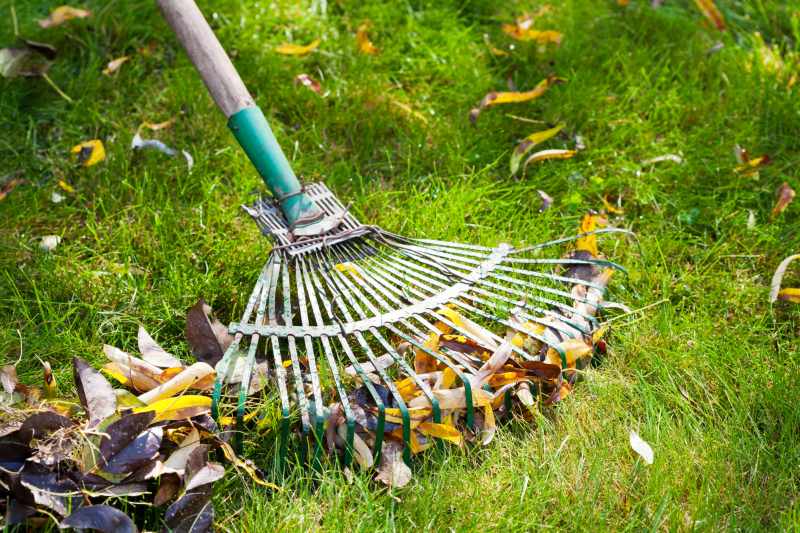
As the temperature starts warming up in spring, your lawn will slowly wake up from its deep winter sleep. Grab your rake and remove debris, fallen branches, and dead plants to allow sunlight, water, and other nutrients to reach the soil. If the soil is wet, wait for it to dry to avoid pulling out healthy grass.
Raking also helps remove thatch in your lawn. Thatch is a layer of living and dead organic plant matter that accumulates in your grass. After your first rake, you can let thatch build up to half an inch, as it can be good for your lawn. Any more than that creates a barrier that blocks oxygen and moisture from the roots. Excessive thatch also attracts pests and diseases. Check out this guide for more signs your lawn has excessive thatch.
Remove Weeds
Weeds can take over your lawn at any time of the year. Don’t worry! You can apply pre-emergent herbicides early in the spring to stop weeds from germinating. If weeds are already showing up, it may be too late to use pre-emergent herbicides. In this case, apply post-emergent herbicides.
Note: Pre-emergents may also prevent seeds from germinating. So, if you want to overseed your lawn after applying a pre-emergent, wait two to four months.
If there are just a few weeds in your lawn, you can remove them manually.
Tip 2: Conduct a Soil Test (If Needed)
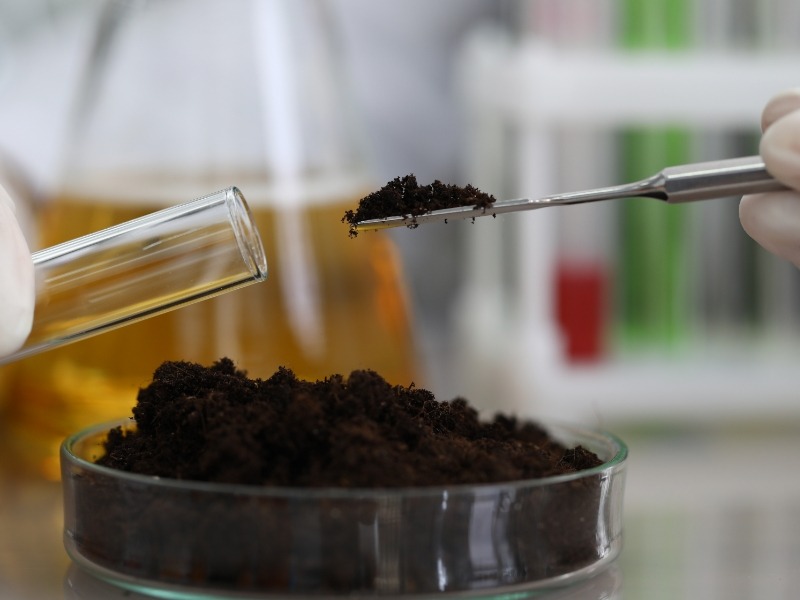
You can care for your lawn well only if you know about the soil. So, it’s best to test your soil once a year. We also recommend you test your soil before fertilizing to choose the right fertilizer.
You can do this yourself with a DIY soil testing kit. However, we recommend you send your soil sample to your local soil testing laboratory for a complete analysis.
You can add calcium, magnesium, potassium, phosphorus, or other amendments to your soil if it lacks nutrients. If you want to fertilize your soil after adding amendments, wait at least a month to prevent them from negatively interacting with each other.
Tip 3: Clean Gutters
New Hampshire is one of the snowiest states in the United States, and you probably wouldn’t even have touched your gutters after fall, so, there will most likely be lots of leaves in them.
Clogged gutters can spoil the appearance of your otherwise beautiful lawn. Not just that. They can cause water to overflow, damaging the foundation of your home. Water in clogged gutters can also leak through your ceiling or attic, damaging the interior.
Tip 4: Aerate Your Lawn (If Needed)
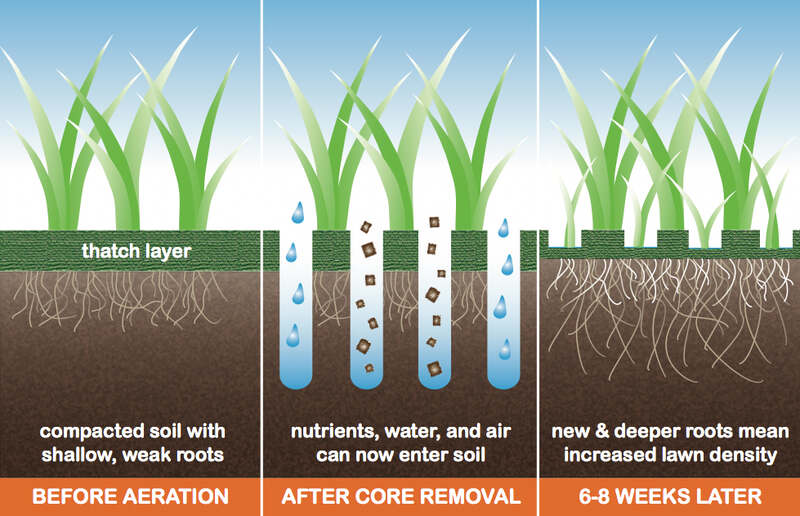
Most lawns don’t need to be aerated regularly, but over time compacted soil can happen, particularly if your lawn has high levels of foot or vehicle traffic.
Signs of compacted soil:
- Increase of water runoff
- Puddles of water after rain or irrigation
- Thinning grass
There are two ways to aerate your lawn. Spike aeration pokes holes into the ground to help with the compaction. However, it is a short-term solution because it only pushes soil aside to make room for water, nutrients, and airflow. Core aeration removes plugs of soil. This is the better solution since it removes the soil rather than just pushing it aside.
Tip 5: Dethatch Your Lawn (If Needed)
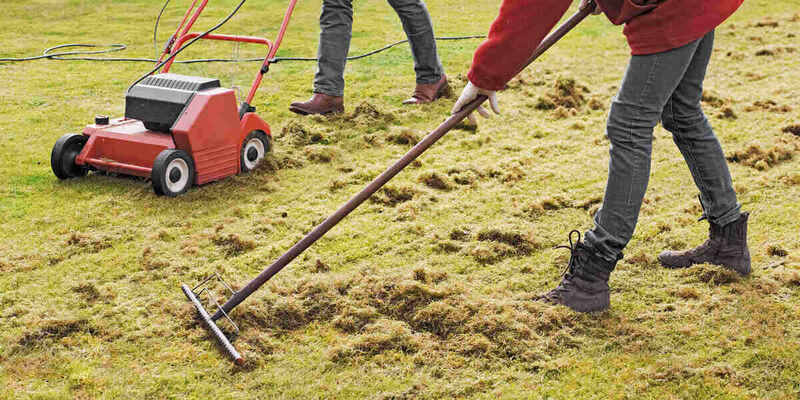
If a lot of thatch has accumulated on your lawn, raking won’t help, and you probably have to dethatch with a dethatcher or verticutter.
You may dethatch your lawn once every five years if needed. Most New Hampshire lawns don’t require frequent dethatching.
The best time to dethatch your lawn is when it’s actively growing. It’s best to dethatch cool-season grasses in the late summer or early fall, but if you didn’t dethatch in the fall then you will want to dethatch in the early spring. Before running the dethatcher, ensure the soil is moist. If you notice any bare spots after dethatching, overseed to fill them.
Tip 6: Fertilize Your Lawn
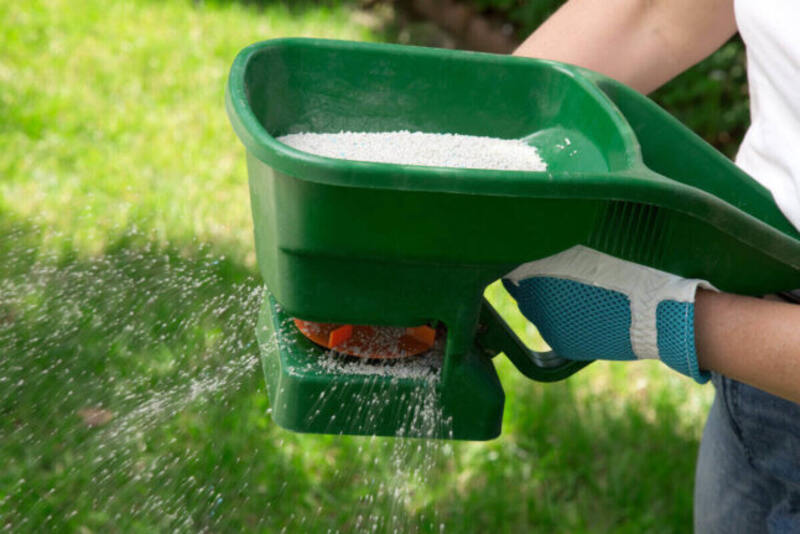
Fall is the best time to fertilize cool-season grasses. However, you can fertilize your lawn in spring if you didn’t do so the previous fall.
Avoid fertilizing your grass regularly in spring, as it can increase the growth rate. When grass grows too fast, it doesn’t get sufficient nutrients and will become weak.
Analyze your soil test result and go for a fertilizer that contains the nutrients your grass needs. Also, apply the right amount of fertilizer. Over-fertilizing will kill your grass and cause runoff.
Note: Always go with slow-release fertilizers. Fast-release fertilizers will make your grass grow quicker but will damage it. In fact, they can even burn your grass.
May Spring Lawn Care Tips for New Hampshire
Even though the saying “April showers bring May flowers” originated in the UK, it can still ring true for New Hampshire residents. Okay, maybe it’s more “snow showers” than rain showers, but seeing those May flowers begin to pop up from the soil will make the long-awaited warm weather that much sweeter.
Tip 1: Look for Signs of Snow Mold and Other Lawn Diseases
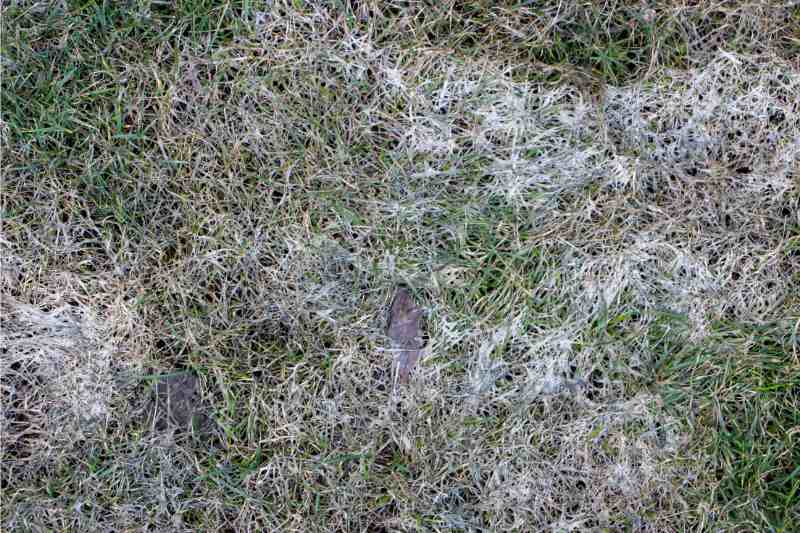
While New Hampshire doesn’t tend to see prime fungal growing weather till summer, it can still attack your lawn any time of the year. Fungi may pop up in the spring even though it may still be cool and wet.
Tips to eliminate fungi
- Plant cool-season grasses as they best suit New Hampshire’s climate and are less prone to diseases.
- Avoid overwatering as it encourages fungi growth.
- Keep your grass mowed at the right height.
- Feed your lawn with proper nutrients.
- Set up an effective yard drainage system, such as a French drain, rain garden, or swale.
Snow Mold
What to look for: There are two types of snow mold: gray and pink snow mold. Gray snow mold appears as circular or irregular patches about 3 feet in diameter. It damages only the grass blades. Pink snow mold looks similar but with a pinkish tint. It’s more dangerous as it kills both grass blades and roots.
How to treat snow mold: Snow mold forms when snow covers an area for a lengthy period. To get rid of snow mold, rake the mold first and then use fungicides with bacillus subtilis, azoxystrobin, or propiconazole.
Red Thread
What to look for: Red thread is a common lawn disease that appears as tan or pinkish-red circular patches. The patches can be between 2 inches and 2 feet in diameter.
How to treat red thread: Red thread occurs when your lawn lacks nitrogen. Proper lawn maintenance is the solution to this disease.
Dollar Spot
What to look for: Dollar spot appears as yellow-tan irregular circular patches about the size of a dollar coin. It often shows up in clusters, and a cottony white growth appears on the grass in the morning.
How to treat dollar spot: Fungicides with PCNB, propiconazole, myclobutanil, triadimefon, or thiophanate-methyl can help get rid of dollar spot. But you shouldn’t only rely on fungicides to get rid of dollar spot as it quickly develops resistance to them. A good lawn care routine is required to get rid of this disease entirely.
Tip 2: Mow Your Lawn Properly
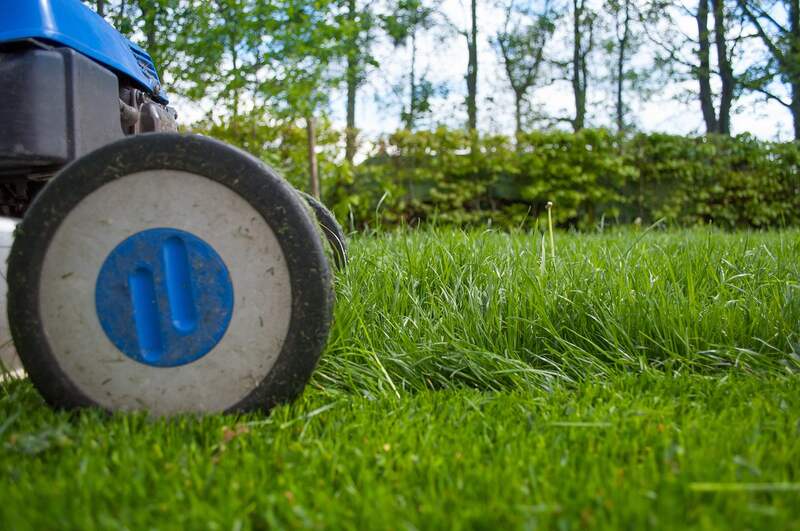
It’s spring! Turn on your lawn mower and mow your grass. Here are the recommended mowing heights for the popular grass types in New Hampshire.
| Grass type | Recommended height |
| Kentucky bluegrass | 2 – 3 inches |
| Fine fescue | 1.5 – 3 inches |
| Tall fescue | 2 – 4 inches |
| Perennial ryegrass | 2 – 3 inches |
Here are some tips for a perfect mow:
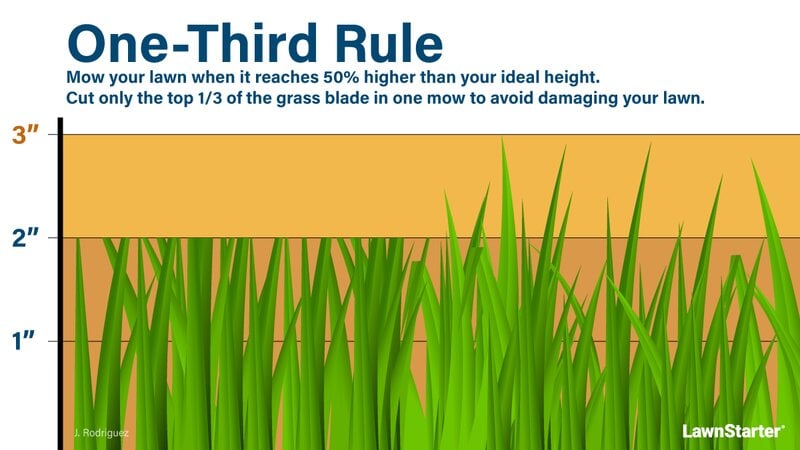
- Mow your grass when it’s dry. The best time to mow your lawn is early evening. Avoid mowing in the morning, as the grass will be wet because of moisture from dew.
- Never cut over one-third of your grass to prevent stressing the grass blades.
- Edge your lawn for a manicured appearance.
- Don’t allow clippings to build up too much, as they can block sunlight from reaching the grass.
Tip 3: Watch for Lawn Pests
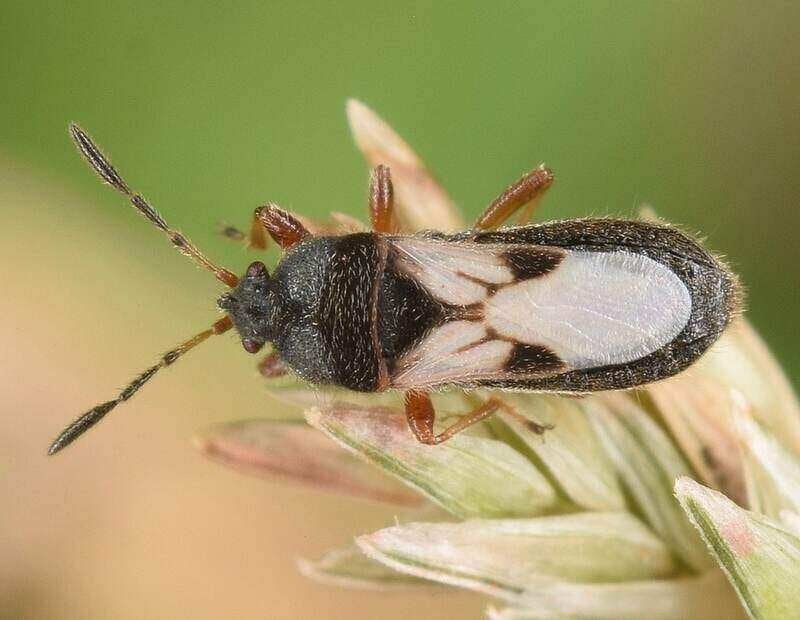
Pests are inevitable, and it’s impossible to stop them altogether. But with proper irrigation, fertilization, and dethatching, you can keep them under control.
Lawn pests usually reproduce during spring. Pesticides or integrated pest management techniques are two ways to help keep pests away or minimize any impact they may have. Be sure to use one of these methods before pests have time to lay their eggs.
Lawn Pests Common to New Hampshire
- Chinch bugs (Chinch Bugs and How to Get Rid of Them)
- Billbugs (How to Identify and Control Billbugs)
- Sod webworms (How to Get Rid of Sod Webworms)
- Lawn grubs (Lawn Grubs: How and When to Kill Them)
You may also find wasps, centipedes, and spiders on your lawn. In this case, it’s best to seek expert help to figure out how best to treat these pests.
Don’t use broad-spectrum pesticides, as they are less effective and can harm beneficial insects, pets, and even kids. We recommend you identify the exact pest in your lawn and use a pesticide or natural management technique that targets it specifically.
FAQ
Should You Fertilize Before or After Dethatching?
Fertilize after you dethatch your lawn. Fertilizing before dethatching may render your fertilizing efforts useless since dethatching is a more involved lawn care procedure.
What is the Best Grass Seed to Use for Overseeding?
If you are seeing thin or bare areas in your lawn, you may want to overseed your lawn. In choosing the best grass seed for New Hampshire lawns, you’ll want to take into consideration the type of grass you already have.
You will likely want to stick with the type of grass you already have or mix it with another. Seed mixes are a popular choice in the New England states where lawns usually include a combination of cool-season grasses.
Ultimately, you will want to take into consideration things such as soil drainage, soil type, sun, shade, and other site conditions when deciding what grass seed will work best for your property.
How Do You Create Low-Maintenance Landscaping?
Consider including plants native to New Hampshire in your landscaping for the best results with little to no finessing needed. These plants naturally love and thrive in New Hampshire’s climate.
Hire a Pro
New Hampshire is famously known for its long, cold, snowy winter. If you want more than just white and gray in your landscaping during the winter, add plants that flower in New Hampshire’s cold winters to add color to an otherwise colorless landscape.
After a harsh, cold winter, spring lawn care is needed to help your lawn recover from extreme cold and prepare it for the upcoming summer. Don’t have the time for doing lawn chores? New Hampshire lawn care pros are just a click away.
Main Image Credit: Artaxerxes / Wikimedia Commons / CC BY-SA 4.0
